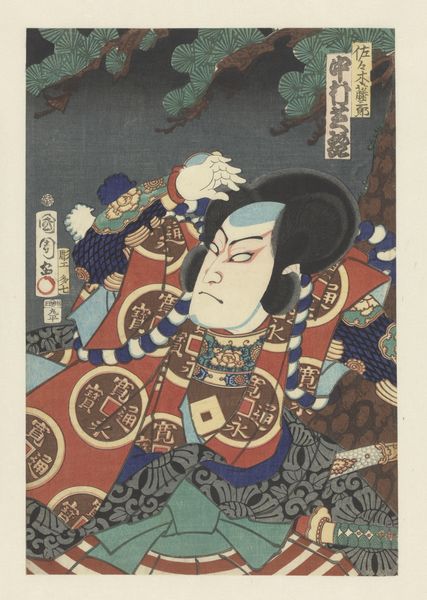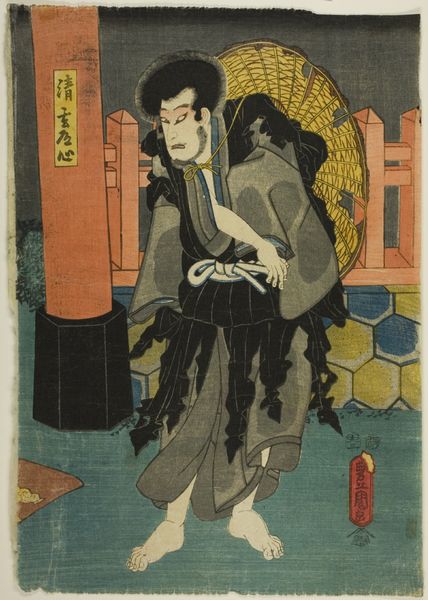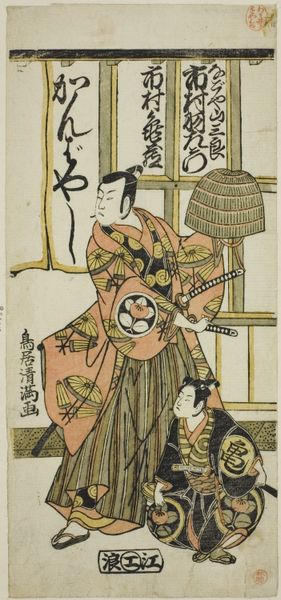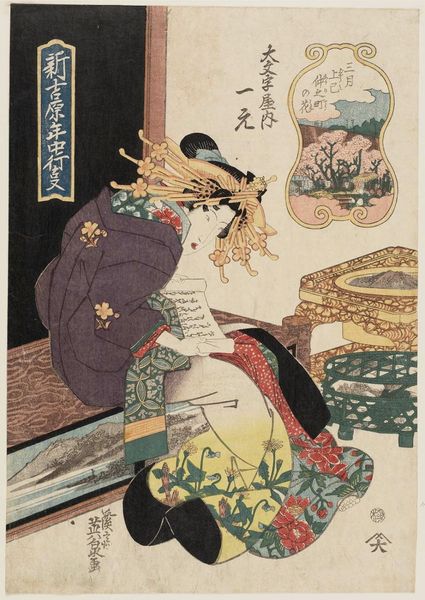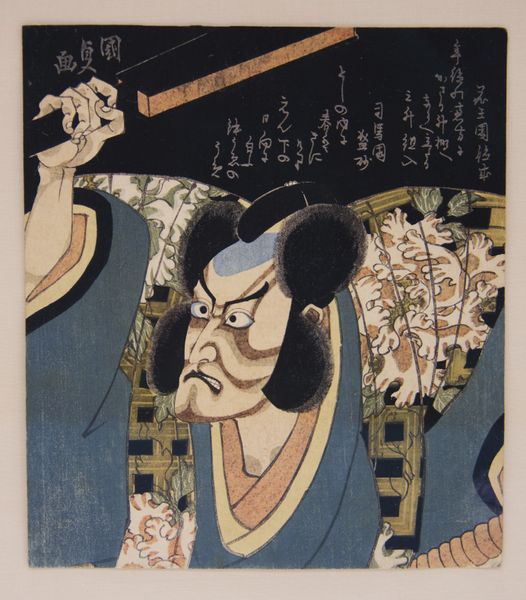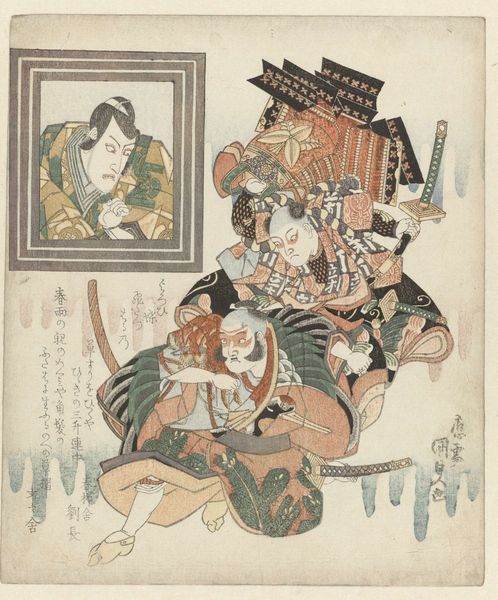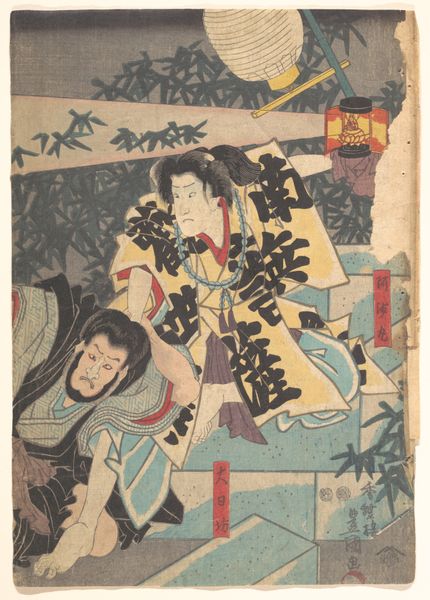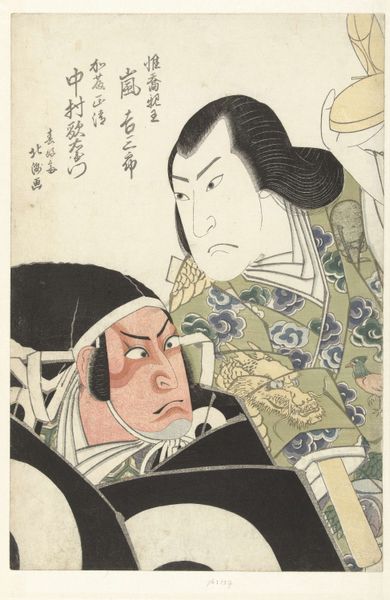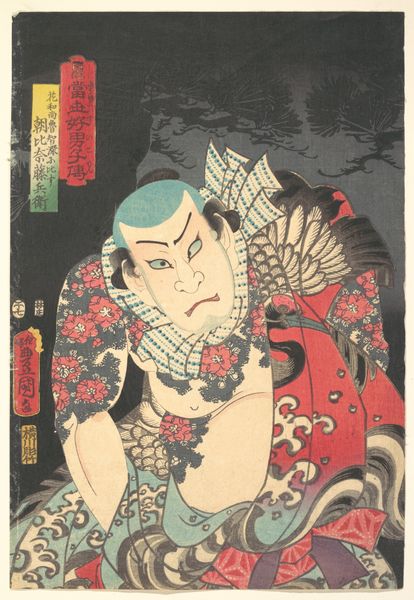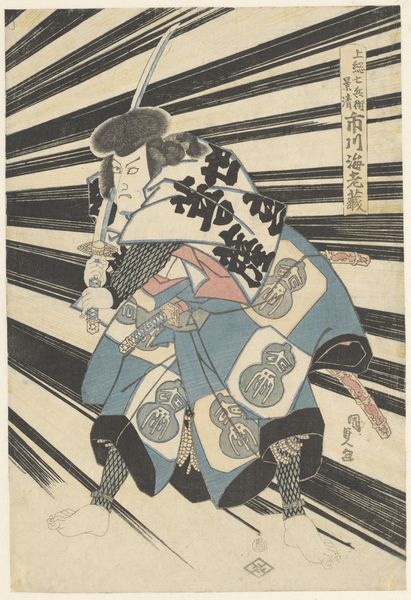
Inuzaka Keno Tanetomo from Story of Eight Dogs (Hakkenden) 1820 - 1840
0:00
0:00
print, woodblock-print
#
water colours
# print
#
asian-art
#
ukiyo-e
#
figuration
#
woodblock-print
#
illustrative and welcoming
#
men
#
sword
Dimensions: Vertical ōban; Image: 17 7/8 × 10 1/8 in. (45.4 × 25.7 cm)
Copyright: Public Domain
Curator: We are looking at "Inuzaka Keno Tanetomo from Story of Eight Dogs (Hakkenden)", a woodblock print crafted by Utagawa Kuniyoshi sometime between 1820 and 1840. It's currently housed at the Metropolitan Museum of Art. What's your initial impression? Editor: Raw power, almost theatrical. The figure with that sword… He exudes contained ferocity, doesn't he? And those curious dog-like figures on his robe, dangling as if on strings? Unexpected, a little whimsical even. Curator: The illustrative nature and use of woodblock prints such as this speak to the burgeoning print culture in Japan during that period, the ukiyo-e tradition aimed at a broader urban audience. The figure is rendered using water colours to add to the rich design. Prints were relatively accessible. The ability to produce multiples democratized image consumption. Editor: Makes you consider the artist's hand, the physical labour of carving those blocks for each colour layer... Then there's the social aspect—these weren't solitary acts, but part of a workshop environment. You'd have the artist, the carver, the printer—a whole collaborative process. Curator: Precisely! Consider the narrative context: Tanetomo is a character from the epic Hakkenden, a sprawling tale of samurai virtues. Kuniyoshi's skill lies in capturing both the individual character and alluding to that complex storyworld. The artist deftly integrates traditional motifs and pop culture. The figures give the figure another level. Editor: I find the colour palette especially striking—that vivid contrast between the red and teal robe and the almost eerie skin tone of the character beside Tanetomo, it pulls me right in. But there’s a kind of inherent tension here—violence held back, a dramatic intensity. Curator: Ukiyo-e allowed for the relatively rapid dissemination of such striking designs to merchants and even ordinary townsfolk. The detailed, elaborate costuming and dynamic action scenes reflect this shift toward broader, less aristocratic art consumption. The figure becomes somewhat legendary via mass reproductions. Editor: You know, thinking about it now, the tension perhaps comes from that clash of beauty and violence—the lovely detailing alongside a scene where who-knows-what is about to happen. Makes one ponder beauty's power to distract from the gruesome realities of conflict. Curator: A poignant thought! I find the materiality here really contributes to my thoughts. The printmaking craft has much to tell us about not only artistic genius, but labor practices. Editor: Absolutely. Now, looking again, the dangling dogs add such a surprising, playful element. Perhaps it’s meant to remind viewers to find levity even in moments of intensity, I don’t know but now I smile a little.
Comments
No comments
Be the first to comment and join the conversation on the ultimate creative platform.
